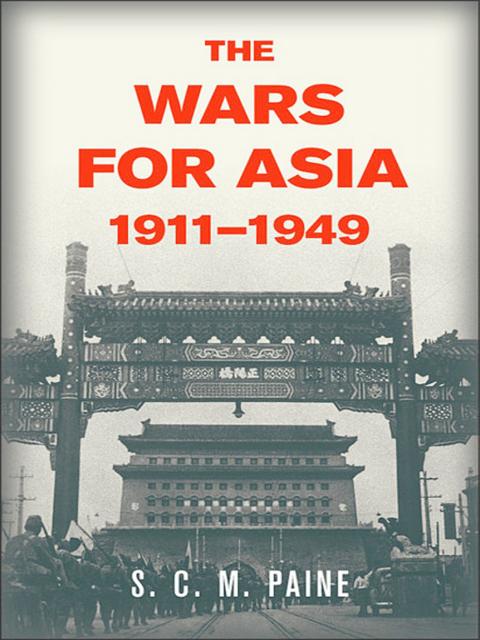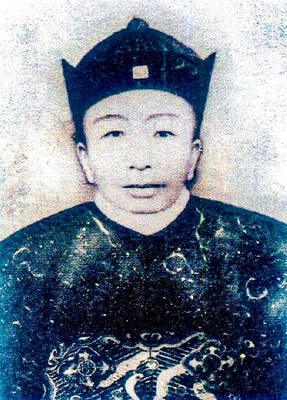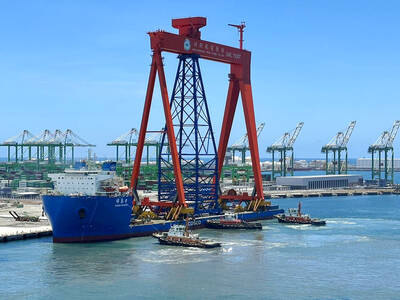In times of rising tensions and uncertainty in the Asia Pacific, it is essential that we look back into the region’s complex past to understand why history, to a degree perhaps unseen anywhere else, is so alive as to threaten the very foundations laid by the economic success of the past two decades.
A new book on the wars that defined the first half of the twentieth century — and that reverberate through time to create a mosaic of seemingly intractable conflicts — sheds much-needed light on the origins of the region’s troubles, past, present and future.
In The Wars for Asia, 1911-1949, S.C.M. Paine, a professor of strategy and policy at the US Naval War College, picks up where she left off in The Sino-Japanese War of 1894-1895: Perceptions, Power, and Primacy (2005), which did a wonderful job analyzing China’s humiliating defeat in a short war with Japan that ended with the Treaty of Shimonoseki under which, among other things, Taiwan was handed over to Japan. In that defeat, the seeds of China’s “century of humiliation” were sown, which half a century later would reap a new — and this time much more devastating — round of hostilities before, during and after World War II.

In her previous work, Paine showed us how a recently modernized Japan made short shrift of China not so much because Japanese forces fought with aplomb, but because of China’s ineptness and the divisions that rendered its leadership incapable of taking control of the situation. Emboldened by its victory and arrival among the select list of developed nations — Asia’s first — Japan then fought another war, this time with Russia, where against all odds defeated its European adversary, thus setting the stage for future conflict over Korea and Manchuria.
Sadly for readers, Paine does not cover the Russo-Japanese War and in The Wars for Asia begins her story, which she tells thematically rather than in linear fashion, in 1911 with the birth of the Republic of China. Using large quantities of sources from China, Taiwan, Japan and Russia, Paine lucidly tells a tale from a perspective that often gets largely ignored by historians in the West by looking at the situation from the eyes of the Asian participants themselves.
As a result, Paine’s account provides much insight into decisions that otherwise have often been described as “irrational” (for example, Japan’s forcing the US’ entry into the Pacific theater by attacking Pearl Harbor) or the result of utterly incapable leaders (Chiang Kai-shek, 蔣介石). She also sheds important light on the domestic economic policies adopted by the US that, rather than deter Japan, achieved the exact opposite and compelled it to send its troops well beyond Manchuria, where they should have gone no further.
In a helpful move, the author provides three levels — local, regional and global — from which to look at the situation in East Asia at the beginning of the twentieth century. All three have China at the center, with Japan regarding it as both a source of threats and opportunity. Ongoing instability in China, with a long succession of overthrows, warlordism and stagnation, added to the threat of communism following the revolution in Russia. For resource-poor Japan, China (especially Manchuria) was too important to leave alone as an indispensable lifeline to ensure its rightful place among the world’s leading nations.
By injecting itself into restive China, Japan unwittingly became an antagonist at all three levels of the conflict by becoming a participant in the Chinese civil war, a counterbalance to Russian influence within the region, and as a force that threatened, along with Nazi Germany, to undermine an international system that Western states were indisposed to abandoning.
With masterful succinctness, Paine manages to distil the leadership battles within Japan, the impact of the Great Recession and the Western refusals to (in Tokyo’s eyes) give it the autonomy it deserved and in doing so weaves a narrative that remains captivating throughout, something that cannot be said of all history books. One of the book’s strengths is its short length — 487 pages, but of those, 170 are for a chronology, endnotes and a bibliography — which makes her treatment of the subject as concise as it is rewarding. Those who seek a blow-by-blow account of all the battles will need to look elsewhere.
Paine’s ultimate objective, and one that she achieves with brio, is to depict the interactions between the three levels of the conflict. Although there is nothing novel in using a multi-layered approach to analyzing conflict, Paine does so in a way that is very helpful, especially in her treatment of Tokyo’s inability, which ultimately proved disastrous, to adjust its strategies in ways that reflected all three levels. In doing so, Japan managed to antagonize every one of the main protagonists in the region, which meant that instead of fighting enemies sequentially as it wanted, it ended up facing enemies on a number of fronts (Moscow did much better in that regard). With Japanese imperial forces already overstretched in an unwinnable war on the Chinese mainland, Tokyo not only succeeded in bringing Russia and the US into the conflict, but allowed Moscow to strike what Paine calls “the most successful act of Soviet diplomacy between 1917 and 1991” by convincing Chiang’s Nationalist forces to cease their campaign of annihilation against the communists and make common cause, if only briefly, against Japan.
Following Japan’s inevitable defeat — hit by US naval successes, the nuclear detonations at Hiroshima and Nagasaki, and the threat of 1.5 million Russian troops — Paine turns, or returns, that is, to the Chinese Civil War, which runs through the entire narrative like a long thread. One of the many achievements of the book is the author’s ability to demonstrate how the shadow of the Civil War always hung over everything else, with Nationalist and communist leaders adjusting their strategy for fighting the Japanese with the eventual resumption of the Civil War clearly in their minds. Chiang rarely sent his best troops to fight the Japanese, while Mao Zedong’s (毛澤東) communists — official communist propaganda notwithstanding — only played a minor role in the mobilization against Japan, instead conserving its forces to fight the Nationalists.
Paine concludes her book with an analysis of the factors that led to the Nationalist’s sudden demise in 1949, prompted in part by a highly successful propaganda campaign by Mao and the inability of Chiang’s government to make the necessary reforms. Not unlike Jay Taylor in his seminal The Generalissimo: Chiang Kai-shek and the Struggle for Modern China, Paine’s portrayal of Chiang is more generous than other recent accounts of his failings and makes a convincing case about the immensity of the challenges that he and other ROC leaders faced in modernizing their country amid civil war and foreign invasion.
Paine’s account is an unsparing, surprisingly even and altogether enjoyable effort that truly deserves to be read widely by academics and policymakers who seek to make sense of the dangerous future that may lie ahead of us in Asia, thanks in great part to wars of the past. For many, it’s unfinished business.

The canonical shot of an East Asian city is a night skyline studded with towering apartment and office buildings, bright with neon and plastic signage, a landscape of energy and modernity. Another classic image is the same city seen from above, in which identical apartment towers march across the city, spilling out over nearby geography, like stylized soldiers colonizing new territory in a board game. Densely populated dynamic conurbations of money, technological innovation and convenience, it is hard to see the cities of East Asia as what they truly are: necropolises. Why is this? The East Asian development model, with

June 16 to June 22 The following flyer appeared on the streets of Hsinchu on June 12, 1895: “Taipei has already fallen to the Japanese barbarians, who have brought great misery to our land and people. We heard that the Japanese occupiers will tax our gardens, our houses, our bodies, and even our chickens, dogs, cows and pigs. They wear their hair wild, carve their teeth, tattoo their foreheads, wear strange clothes and speak a strange language. How can we be ruled by such people?” Posted by civilian militia leader Wu Tang-hsing (吳湯興), it was a call to arms to retake

This is a deeply unsettling period in Taiwan. Uncertainties are everywhere while everyone waits for a small army of other shoes to drop on nearly every front. During challenging times, interesting political changes can happen, yet all three major political parties are beset with scandals, strife and self-inflicted wounds. As the ruling party, the Democratic Progressive Party (DPP) is held accountable for not only the challenges to the party, but also the nation. Taiwan is geopolitically and economically under threat. Domestically, the administration is under siege by the opposition-controlled legislature and growing discontent with what opponents characterize as arrogant, autocratic

When Lisa, 20, laces into her ultra-high heels for her shift at a strip club in Ukraine’s Kharkiv, she knows that aside from dancing, she will have to comfort traumatized soldiers. Since Russia’s 2022 invasion, exhausted troops are the main clientele of the Flash Dancers club in the center of the northeastern city, just 20 kilometers from Russian forces. For some customers, it provides an “escape” from the war, said Valerya Zavatska — a 25-year-old law graduate who runs the club with her mother, an ex-dancer. But many are not there just for the show. They “want to talk about what hurts,” she